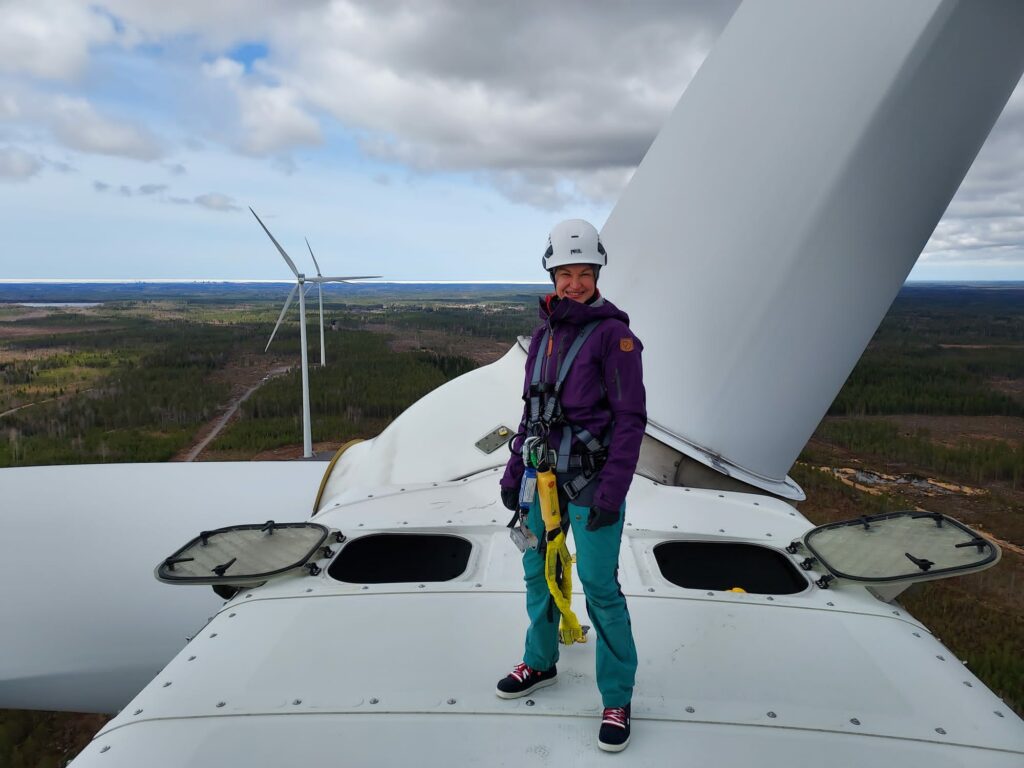This year there will be 1 000 wind turbines and 5 000 megawatts in Finland

Global Wind day is celebrated on Wednesday 15th of June. The amount of wind power is growing – both in Finland and globally – but even more growth is needed. In 2025 wind power will cover more than a quarter of the electricity consumed in Finland. The message of Global Wind Day, however, is that climate goals and energy self-sufficiency require higher growth rates.
Wind power covered less than one per cent of the electricity consumed in Finland only less than ten years ago, now about 10 per cent and in 2025 at least 27 per cent. Proportionate to the number of projects currently planned, it can be estimated that the limit of one thousand power plants and 5 000 megawatts will be reached this year, but there is room for growth.
“Germany and Finland are countries of quite similir size. There are more than 80 million Germans and thirty thousand wind farms. Looking at the population density and the number of wind farms, we have a huge potential for the wind power growth in Finland, when more marine areas are being utilized. Germany is building more and more onshore wind power – the second largest in Europe last year”, says Heidi Paalatie, Chief Operating Officer of the Finnish Wind Power Association.
In Finland, more than six billion euros will be invested in wind power between 2022 and 2025. The amount is of the same order of magnitude as all fixed investments in Finnish industry combined in 2021. The wind power built now will support Finland’s move towards self-sufficiency in electricity, which will also create security. Increasing amounts of clean and affordable electricity are needed, as transport, industry and heating will increasingly rely on electricity and electricity-based synthetic fuels. Wind power is also seen as an enabler of hydrogen solutions for its affordability and zero emissions.
In Finland, the green transition and wind power construction can be accelerated e.g. directing the additional resources of the administrative courts and the Supreme Administrative Court to the handling of complaints about these projects; and identifying green transition projects as major infrastructure projects, thus speeding up the handling of complaints.
An additional 17 gigawatts of wind power was built in Europe in 2021
However, the amount is not even half of what EU should build to meet its 2030 climate and energy targets. 81 per cent of new wind turbine generators were onshore. Sweden, Germany and Turkey built the most onshore wind power. The largest number of new wind turbine generators were built in the UK. The WTG’s built in Britain were mainly offshore wind. There are now 236 gigawatts of wind power in Europe.
China and the United States are wind power top countries globally
The global wind power market has nearly quadrupled in the last decade and wind power has established itself as one of the most competitive energy sources in the world. In 2021, 93 gigawatts of new wind power was built. Today, there is 837 gigawatts of wind power capacity worldwide, an increase of 12.4 per cent on the previous year.
However, according to the GWEC (Global Wind Energy Council), the current pace is not enough to ensure that the world reaches net zero by 2050. Wind power will be needed three times faster over the next decade so that we can avoid the worst effects of climate change.
The five countries that built the most new wind power in the world in 2021 were China, the United States, Brazil, Vietnam and the United Kingdom, which together account for 75.1 per cent of all global wind power capacity. The top five in the overall market, namely China, the United States, Germany, India and Spain, have remained unchanged.
Global Wind Day is a global event held annually on June 15th. On Wind Day, we will learn about wind energy and the opportunities it offers as part of our energy self-sufficiency and energy security. At the same time, wind power is a decision for a cleaner future and growth in employment and investment in Finland and the world.